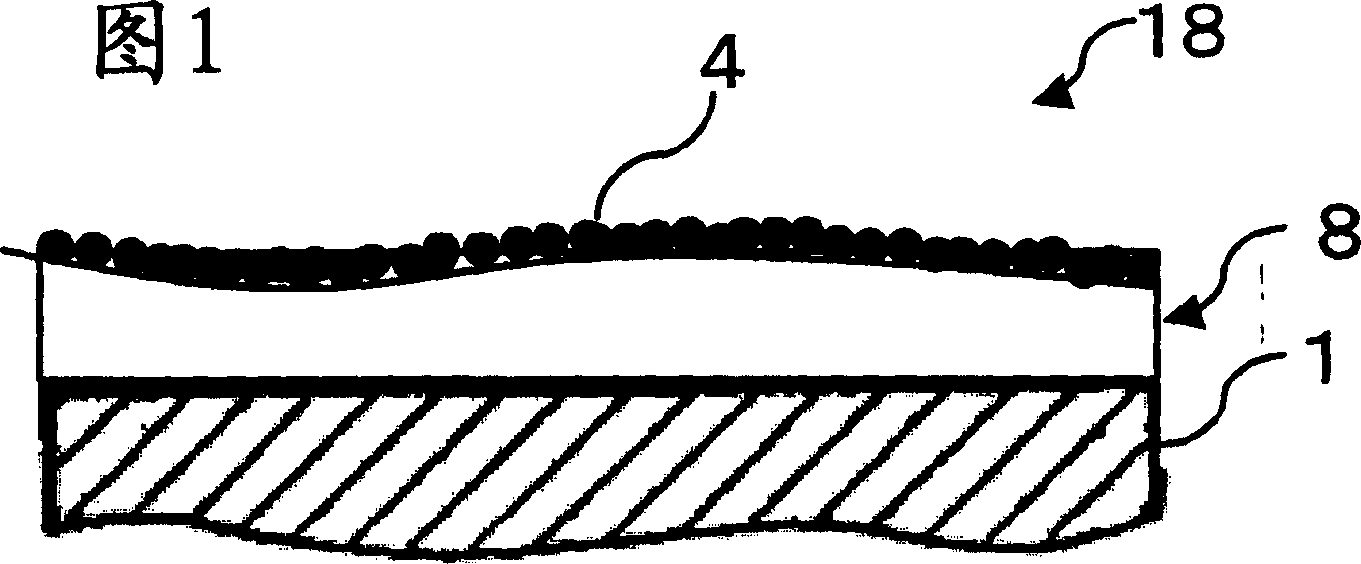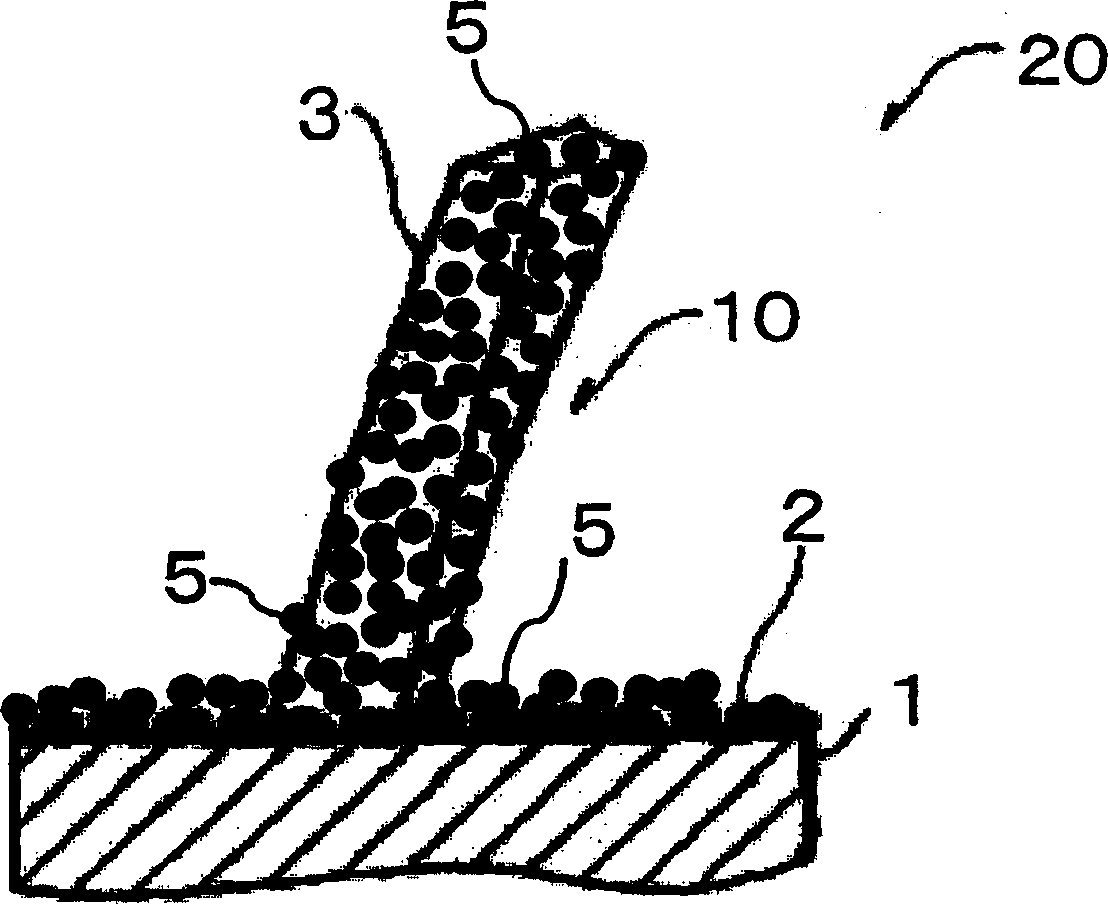Photocatalyst material and process for producing the same
A technology of photocatalyst and manufacturing method, which is applied in the direction of catalyst activation/preparation, chemical instruments and methods, physical/chemical process catalysts, etc. It can solve the problems of cost problems such as the insertion of the bottom layer of the substrate, and achieve high photocatalytic activity. Effect
- Summary
- Abstract
- Description
- Claims
- Application Information
AI Technical Summary
Problems solved by technology
Method used
Image
Examples
Embodiment 1
[0105]
[0106] The columnar hollow titanium oxide photocatalyst material was loaded with Cu by the above-mentioned photoprecipitation method to fabricate a titanium oxide filter. It was confirmed by SEM observation of the obtained photocatalyst material that Cu microparticles with a particle diameter of 1 to 50 nm were supported on the surface of the titanium oxide crystal.
Embodiment 2
[0107]
[0108] Copper sulfate trihydrate (Cu(NO 3 )2 ·3H 2 O Wako Pure Chemicals special grade), the concentration was adjusted to 2 × 10 -5 mol / L, impregnate the titanium oxide filter in the copper nitrate aqueous solution and let it stand for 24 hours. Through this operation, Cu is adsorbed on the titanium oxide surface until equilibrium adsorption is reached. After supporting Cu on the titania filter, it was washed with pure water. Thereafter, it was dried at 150° C. for 1 hour, and heat-treated at 450° C. in air for 2 hours. In the state of heat treatment in air, the Cu surface is in an oxidized state, so it is reduced in a hydrogen atmosphere. A titania filter was filled in the quartz glass tube, and reduction treatment was performed at 450° C. in a 10 vol % hydrogen-argon mixed gas for 2 hours. In the photocatalyst material thus obtained, it was confirmed by SEM observation that Cu microparticles having a particle diameter of 1 to 50 nm were supported on the surf...
Embodiment 3
[0109]
[0110] It carried out by the sputtering method using the RF magnetron sputtering apparatus (Nippon Vacuum Technology Co., Ltd., SH-350EL-T06). In the film-forming chamber, the substrate carrying the titanium oxide photocatalyst of the columnar hollow structure and the Cu target were placed facing each other. As the target, Cu palladium with a target purity of 99.99% or higher was used. Use an oil rotary pump to pump air to 10Pa. Thereafter, air is pumped by a turbomolecular pump to bring the film-forming chamber to a predetermined degree of vacuum. Next, argon gas with a purity of 99.999% or more is introduced to make the film forming chamber an argon atmosphere. At this time, the flow rate of the introduced gas and the opening / closing degree of the main valve are adjusted so that the predetermined argon gas pressure (sputtering pressure) is reached. Then, the Cu target was externally energized by a DC power supply to perform Cu sputtering, and the set titanium o...
PUM
| Property | Measurement | Unit |
|---|---|---|
| particle diameter | aaaaa | aaaaa |
| particle diameter | aaaaa | aaaaa |
Abstract
Description
Claims
Application Information
 Login to View More
Login to View More - R&D
- Intellectual Property
- Life Sciences
- Materials
- Tech Scout
- Unparalleled Data Quality
- Higher Quality Content
- 60% Fewer Hallucinations
Browse by: Latest US Patents, China's latest patents, Technical Efficacy Thesaurus, Application Domain, Technology Topic, Popular Technical Reports.
© 2025 PatSnap. All rights reserved.Legal|Privacy policy|Modern Slavery Act Transparency Statement|Sitemap|About US| Contact US: help@patsnap.com



